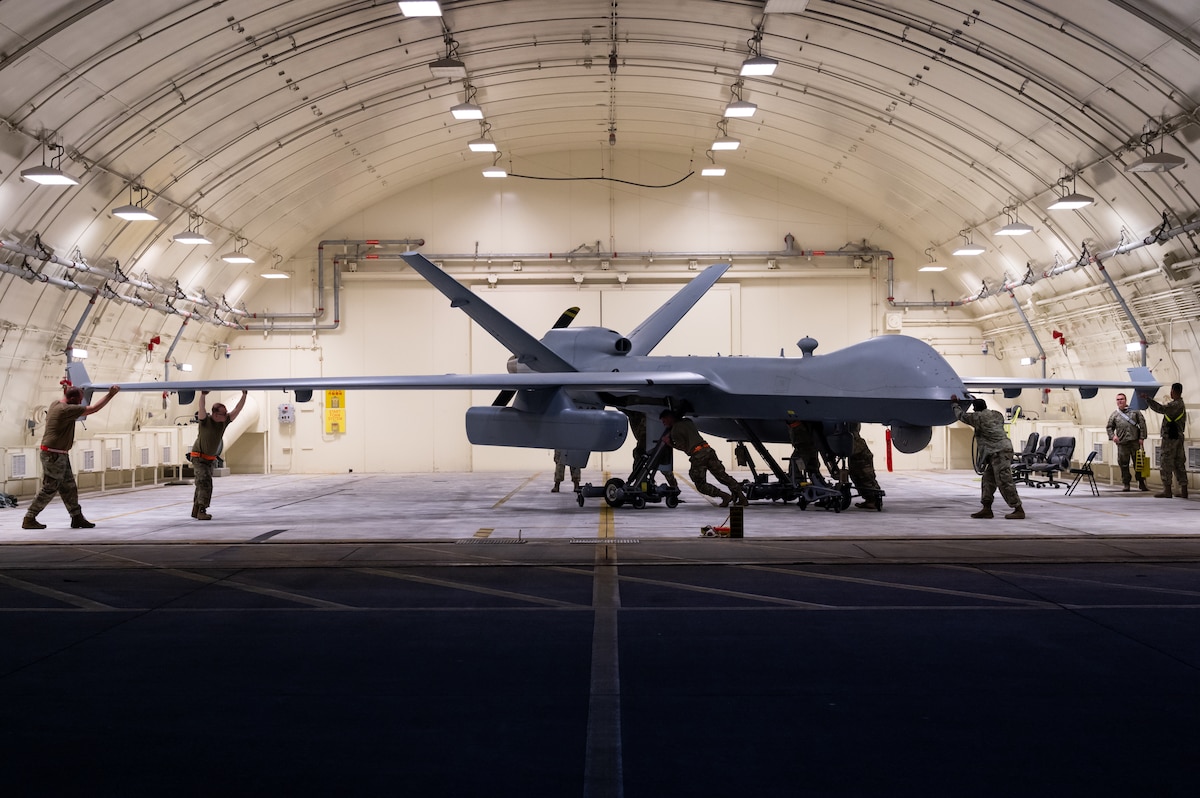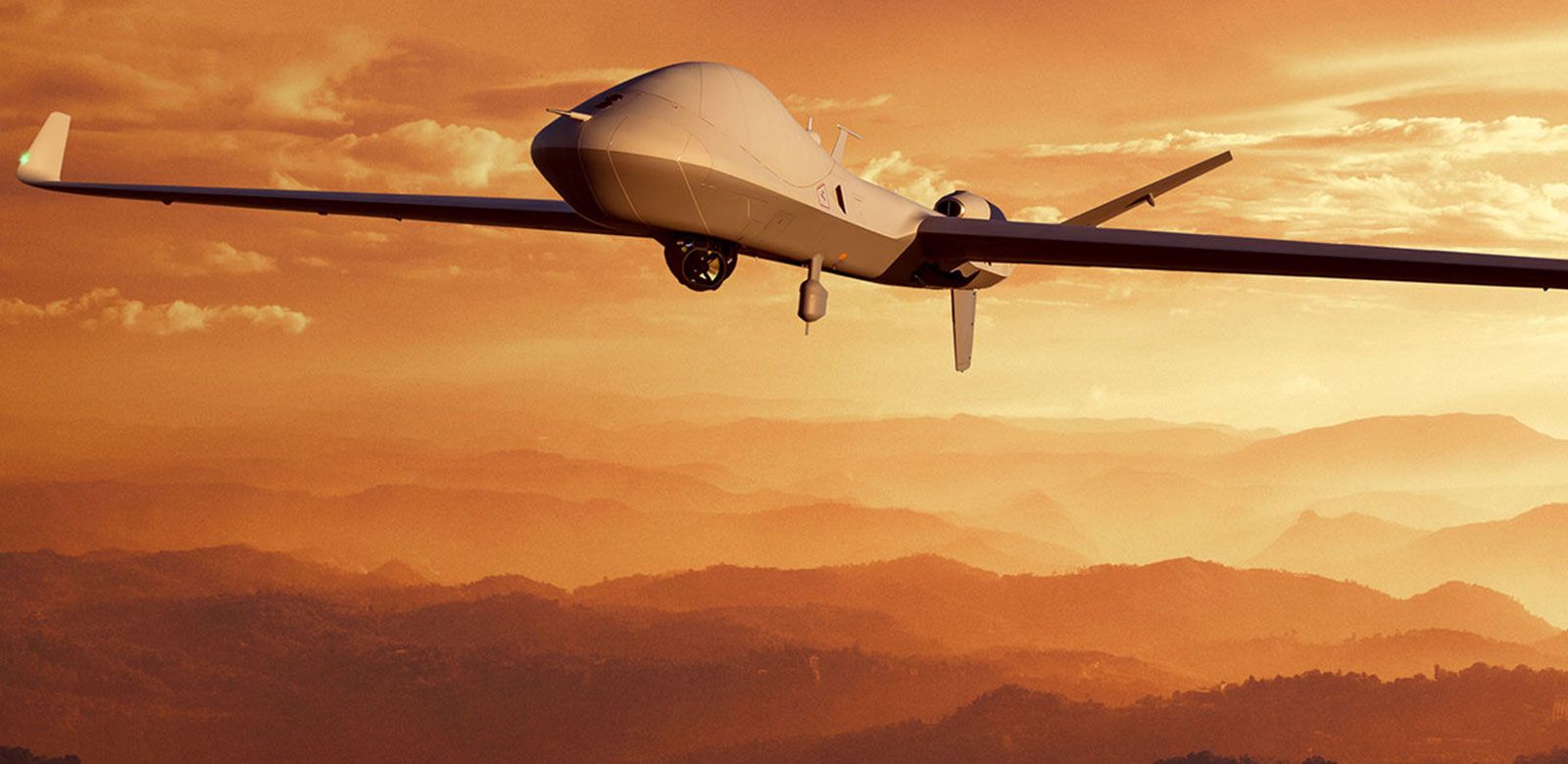The US Air Force has announced that the first MQ-9 Reaper drone has successfully touched down at Kadena Air Base, marking a crucial milestone in the plan to relocate a USAF MQ-9 squadron from the Japanese island of Kyushu to Okinawa.
China ‘Shoots Down’ Suicide Drones Attacking Its AWACS Aircraft As PLA Learn From Ukraine-Russia War
The service said that on October 13, the Kadena Air Base, often referred to as the “Keystone of the Pacific” because of its highly strategic location, welcomed an MQ-9 Reaper that had previously been stationed at Japan Maritime Self-Defense Force Kanoya Air Base.
The Air Force is relocating all eight MQ-9 Reaper UAVs from Kanoya Air Base, a Japan Maritime Self-Defense Force facility in Kagoshima Prefecture on Kyushu, to Kadena Air Base on Okinawa.
These UAVs are part of the newly established 319th Expeditionary Reconnaissance Squadron, concluding a yearlong deployment at Kanoya Air Base.
In an official statement, the service emphasized that, during their deployment, the MQ-9s will provide distinctive ISR capabilities that facilitate quick, well-informed decision-making by senior leaders to ensure the region’s safety and security within the framework of the US-Japan alliance.
“Understanding the battlespace is essential to mission success,” said US Air Force Col. Henry Schantz, 18th Operations Group commander. “Kadena has a long history of hosting ISR platforms, and we are excited to welcome them to our team.”
An image released by the service depicts maintenance personnel from the 319th Expeditionary Reconnaissance Squadron pushing an MQ-9 Reaper into a hardened aircraft shelter upon its arrival at Kadena Air Base, Japan, on October 13, 2023.

Kadena’s strategic significance lies in its capacity to serve as a crucial hub for conducting ISR operations, granting access to multiple potential hotspots throughout the Indo-Pacific area.
According to the Air Force, by operating from this pivotal site, long-endurance remotely piloted aircraft will deliver time-critical, indispensable intelligence to support the decision-making of defense leaders in both the United States and Japan.
“The deployment of aircraft like the MQ-9 to the Indo-Pacific region exemplifies the DOD’s continued commitment to enhancing America’s defense posture while building on the strong foundation of our Alliance with Japan,” the service added.
Relocation Of Drones To Monitor Chinese Activity?
The MQ-9 drones, deployed by US Forces in Japan at Kanoya Air Base on Kyushu, began their one-year mission on November 21, 2022. Their focus has primarily been conducting surveillance and issuing warnings over the East China Sea, particularly monitoring China’s growing maritime presence near Japan.
Washington To Plug ‘Gaping Holes’ In Cyber, Space-Based Surveillance As Hamas Attack Stuns US, Israel
In response to growing apprehensions regarding China’s military expansion and potential threats to Taiwan, Japan has been actively enhancing its defense capabilities, especially on its southern island territories.
During a press conference on October 10, Japan’s Defense Minister Kihara Minoru noted the heightened security conditions and stated that the relocation of MQ-9s to Kadena was intended to bolster the deterrence and response capabilities of the Japan-U.S. Alliance, particularly enhancing intelligence gathering abilities.
He specifically pointed to the increasingly challenging security environment in Japan’s southwestern Nansei island chain, an expanse of approximately 1,200 km stretching from Kagoshima to Okinawa and extending southwest towards Taiwan.
This island chain includes the contentious Senkaku/Diaoyu Islands, which are under Japanese control but also subject to claims by China and Taiwan.

Kihara further explained that as the actions of neighboring countries around Japan have grown more assertive and the demand for information gathering in the sea and airspace surrounding Japan’s southwest region has risen, the US Air Force MQ-9 placement at Kadena Air Base offers several advantages.
It provides improved access to the region and allows for an extended duration of ISR (Intelligence, Surveillance, and Reconnaissance) operations closer to the previous location at Kanoya Air Base.
In a similar line, US Air Force Lt. Col. Jordan Smith, 319th ERS commander, said, “Our Airmen are excited to serve in this challenging priority theater. Staging the MQ-9 from Kadena will expand our ability to build a more detailed, real-time operating picture to help protect a rules-based international order enabling a prosperous Indo-Pacific.”
Nonetheless, Okinawa, the southernmost island prefecture of Japan, currently shoulders the significant responsibility of accommodating approximately half of the roughly 55,000 US military personnel stationed there.
- Contact the author at ashishmichel(at)gmail.com
- Follow EurAsian Times on Google News




